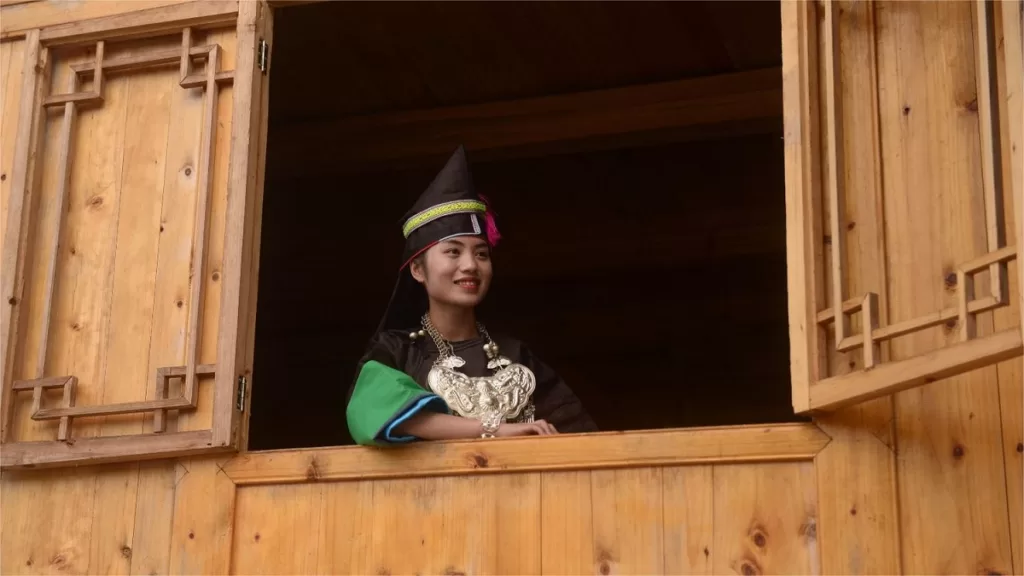Kongshen Miao Village – Ticket, Opening Hours, Location, and Highlights


Kongshen Miao Village (空申苗寨) is a branch of the Miao ethnic group, primarily situated at the foot of Leigong Mountain, the main peak of Miaoling Ridge. Legend has it that the villagers are descendants of Zhang Guolao and his sister, well-known deities in Chinese folklores. With 215 households and a population of 1015, the village is renowned for its Miao women who wear ultra-short skirts year-round while working and living. This unique attire, featuring five-inch-long skirts, distinguishes them from other Miao branches, earning them the moniker “World’s Ultra-Short Skirt Miao,” commonly known as “Short Skirt Miao.” The village also observes distinctive cultural practices, including Maoren Festival, singing and offering drinks to welcome guests, “bride snatching,” and establishing familial relationships through traditional ceremonies.
Table of Contents
- Basic Information
- Location and Transportation
- Highlights of Kongshen Miao Village
- Other Attractions in Rongjiang County
Basic Information
| Estimated Length of Tour | 1 – 2 hours |
| Ticket Price | Free |
| Opening Hours | 24 hour a day |
Location and Transportation
Kongshen Miao Village is situated in Liangwang Township, Rongjiang County, Qiandongnan Miao and Dong Autonomous Prefecture, Guizhou Province, China. It is located approximately 94 kilometers from the county seat and 18 kilometers from the township government.
To reach Kongshen Miao Village, you can take a scheduled bus from Rongjiang to Langdong. The buses depart at 7:00, 13:00, 14:30, and 16:00, passing through Kongshen.
Alternatively, you can take a bus from Leishan County to Langdong. Upon reaching Langdong, transfer to another vehicle heading to Kongshen Road intersection. From there, it’s a 1-hour uphill walk to the village. Another option is to hire a car from the Kongshen Road intersection directly to Kongshen, which takes approximately 20 minutes.
Highlights of Kongshen Miao Village
Distinctive Attire

The Miao women of Kongshen Miao Village showcase a distinctive attire, featuring a black diagonally-buttoned short shirt with azure fold-back sleeves. They wear a handmade pointed hat, resembling the shape of the Chinese character “人” (ren), crafted from self-made cyan cloud fabric. A silk ribbon is tied around the hat, and they adorn their necks with three to five silver necklaces. The lower garment consists of a pleated black skirt measuring only five inches in length and a colorful embroidered waistband reaching the ankles. Legend has it that in the distant past, before the availability of fabric, women used tree bark to fashion pointed hats and clothes. The skirts, evolving from banana leaves to fabric, retained the traditional pleated pattern resembling banana leaf veins. Over time, due to the need to traverse mountains and waters in all seasons, the skirts gradually transformed into the iconic ultra-short skirts, measuring only five inches.
Maoren Festival

The Maoren Festival, an ancient Miao celebration, locally known as “Laosha Li,” takes place from the second to the third month of the lunar calendar. During this festival, regardless of age or marital status, young men and women have the freedom to choose their companions and form pairs. They gather at the Maoren Slope to weave straw men, sing love songs, and share moments of joy. Particularly well-matched pairs subtly express their feelings and may separate from the group to find a quieter spot.
Legend has it that in ancient times, the Short Skirt Miao had a custom of prohibiting intermarriage within the same village, and marriages were arranged by parents. This led to many childhood friends and lovers being separated, as young women were often sent far away to be married. Returning to their hometowns in March to assist with spring farming, these women would invite unmarried girls and boys from the village to the mountains to weave straw men and sing songs. Through their singing, they expressed the sorrow of forced separation from their loved ones and encouraged unmarried sisters to avoid distant marriages. While inter-village marriage restrictions have eased, this ancient tradition has evolved into a romantic festival for young people to choose their partners and express their affection.
Other Attractions in Rongjiang County

Sanbao Dong Village

Zaidang Dong Village

Dali Dong Village
Guizhou local life, Qiandongnan attractions